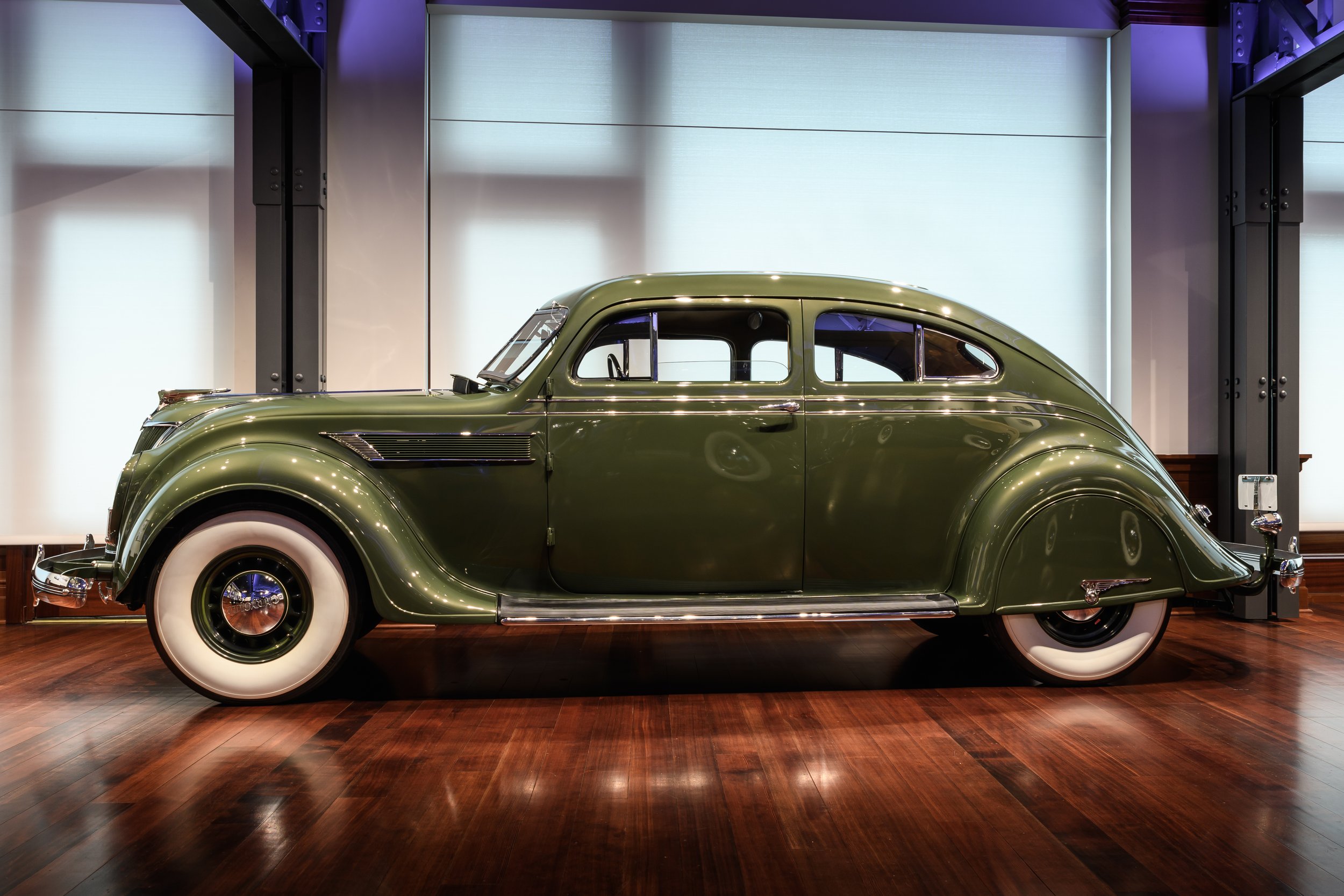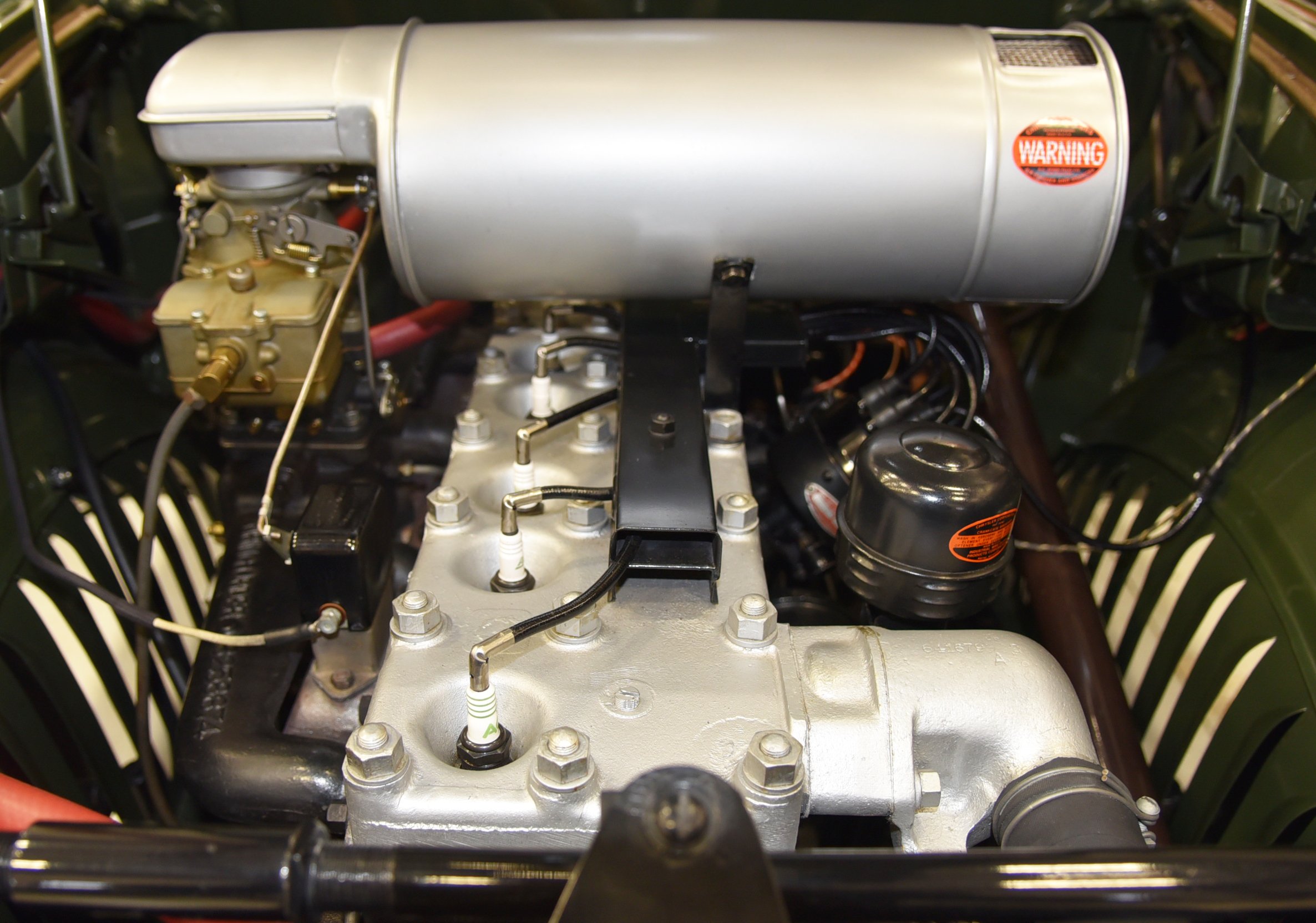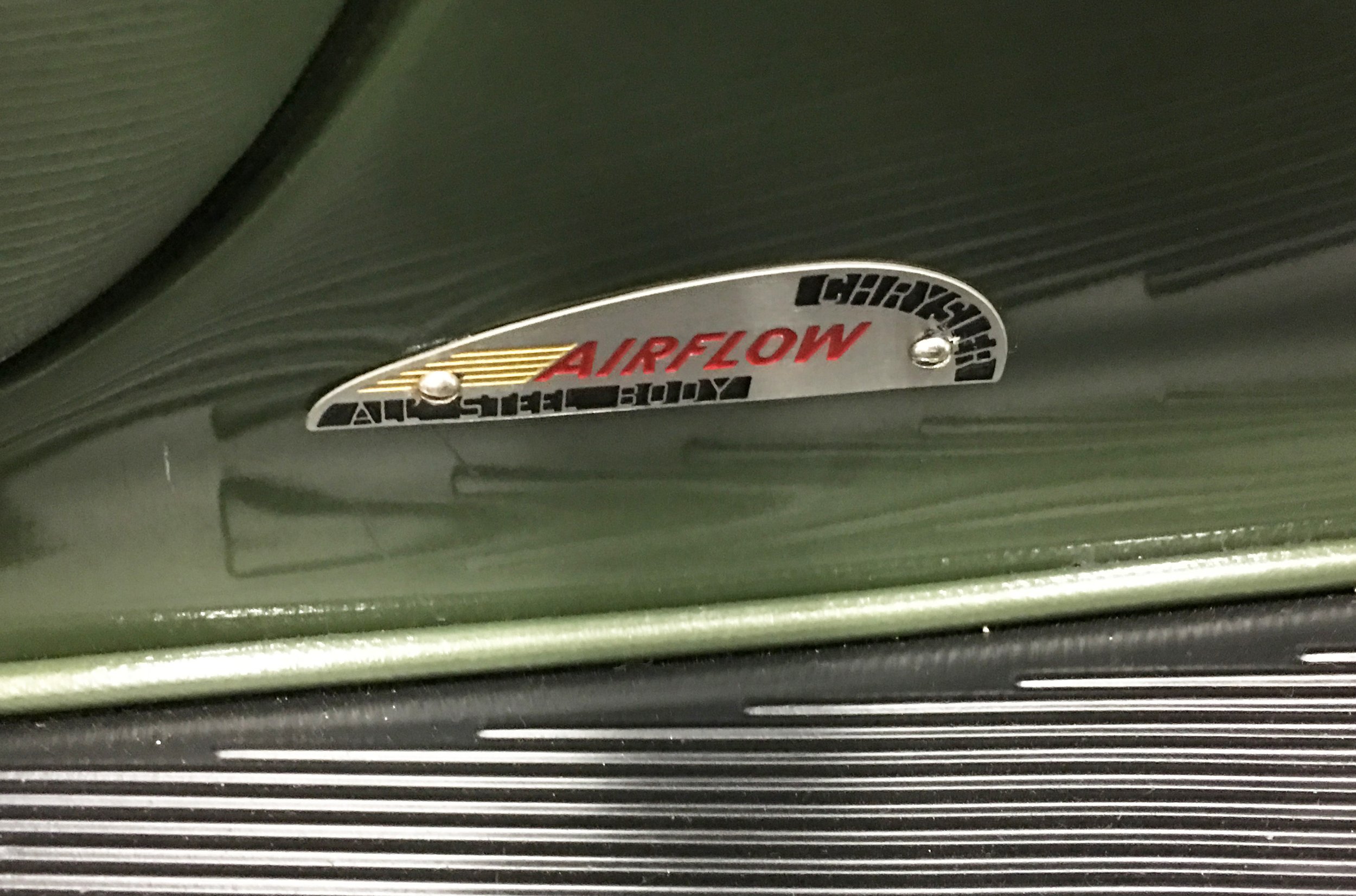1935 Chrysler Airflow C-2 Imperial Coupe





The vehicle was a bold and radical departure from its predecessors, due to its novel beam and truss design, lightweight construction, superb strength, and spacious interior.
Had a streamline approach to every exterior section of the car, thanks to the V’d split windshield, waterfall grille, and fenders enclosing the front and rear tires.
“Chrysler Airflow’s rounder, smoother, and more flowing shapes were introduced in 1934, due to cultural constructs that emphasized security and togetherness at the expense of individualism.”
This 1935 Imperial C-2 Coupe is one of ten known to survive of just 200 built. The Airflow is perhaps the best example of Art Deco style in the American idiom. It is also proudly declared by Chrysler to be “The first rear motorcar.” It has gained over 50 engineering firsts and 72 national speed records. For example, Chrysler demonstrated the Airflow's structural strength by pushing one off a 110-ft high cliff, then driving the car away.
The man behind the Chrysler Airflow’s new direction was engineer Carl Breer. He was inspired by a formation of military airplanes, which caused him to consider wind resistance and air pressure, and led him to consult with aviation pioneer Orville Wright. With his help, Chrysler engineers set out to create a revolutionary car that was lighter, more aerodynamic and had a better weight distribution front to rear. Leaving for Willys, when he took over operations of that company, three engineers came with him. They followed him when the Chrysler Corporation was launched and helped build a strong organization. Carl Breer, Owen Skelton and Fred Zeder were known as 'Chrysler's Three Musketeers,' and the Airflow was their implementation of 'form follows function.’
The Chrysler Airflow C-2 Imperial Coupe was introduced to the public at the New York Auto Show in 1935. At this time, cars on the road were all quite similar; large, boxy automobiles traditionally built with the body attached to the chassis. With hundreds of hours of engineering dedicated to producing a more efficient car of the future, the public essentially was not ready for an imperative change, and the car did not sell as successfully as Chrysler had expected. Although the car did not directly benefit the company as much as executives had hoped, the innovations the Airflow brought forth were not ignored by other manufacturers. Volvo was the first manufacturer to put a smaller copy of the Airflow into production, and the Peugeot 202 saw great success. The Toyota AA was the first car built by the brand, and was essentially a copy of the airflow.
The year 1935 offered the C-1, Imperial C-2, Imperial Custom C-3, and Custom Imperial CW vehicles. The model lineup included the Airstream available with either six- or eight-cylinder power and in Deluxe (CZ) configuration which added additional chrome trim, dual trumpet horns, dual bullet-shaped taillights, fender-mounted parking lights, and a winged '8' emblem on the front sides of the hood. The three-speed manual was standard on all models except the Imperial Airflows which had an automatic overdrive. All Chrysler Airflows were closed models with the vast majority being the four-door sedan. The Chrysler C-2 was offered as a two-door coupe or four-door sedan. These were slightly higher than the price of the C1 but less than the C3. The CW was the most expensive.
The combined sales of the C-1 for 1935 were just under 5,000 units. 2,598 examples of the C-2 were sold including 200 of the coupe and 2,398 of the sedan. The combined C-3 was even less at just over 100 units and the combined CW production was 32 units. The Airflow disappeared after 1937 with only 55,000 produced for both Chrysler and DeSoto car lines over four years.
All areas of the cars were taken into consideration to improve overall dynamics. A traditional two-box design car of the time carried roughly 65% of its weight over the rear wheels, which worsened with passengers. The new Airflow’s engine was moved forward over the front wheels, and seating positions for all passengers was moved forward so that rear passengers sat between the axles, not on top of the rear axle. This improved the weight distribution to 54% front and 46% rear, which evened to about 50-50 with passengers on board.
Chrysler built its own wind tunnel at the Highland Park headquarters to properly test aerodynamics. Engineers found that the two-box design that was seen on nearly all cars at the time was so aerodynamically inefficient, that it was actually more efficient driven backwards!
The Chrysler Airflow had a streamline approach to every exterior section of the car; the windshield was comprised of two sheets of glass that raked backwards but also raked side to side at a ‘V’ angle. The 'Vee'd' split windscreen was considered revolutionary for its day, reducing air resistance and complementing the gentle sloping body lines and aerodynamic features. The front grille was not an intrusive upright piece, but more of an integrated ‘waterfall’ look, with the lights remaining relatively flush with the body. In an effort to stimulate sales, the front end and grille styling were toned down, gaining a more conventional appearance. The front fenders enclosed the front tires, and the rear fenders nearly encased the rear tires to further improve the power to drag ratio.
Most automakers of the era used wood structural framing members in their car bodies, while the Airflow utilized a full-steel body. The interior was comfortable and well-appointed, with plush fabrics, tight-fitting doors, decorative chrome, and a well-thought-out arrangement of dashboard gauges. The rear seat was deeper, and the front seat was wider than in other vehicles. They had exposed chromed tubular frames and most featured cloth upholstery that had leather accents and piping, while a few received all-leather upholstery.
Specifications:
Engine: 299 C.I. L-head Inline Eight
Horsepower: 122 @ 3400 RPM
Top Speed: 95 MPH
Suspension: Rigid axles, semi-elliptic leaf springs
Brakes: Lockheed hydraulic drurn type (CW vacuum assisted)

